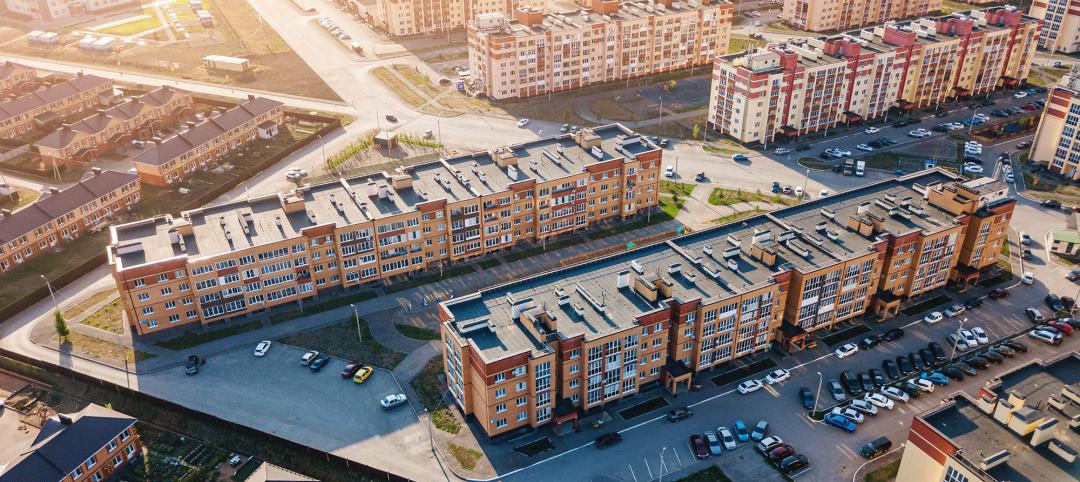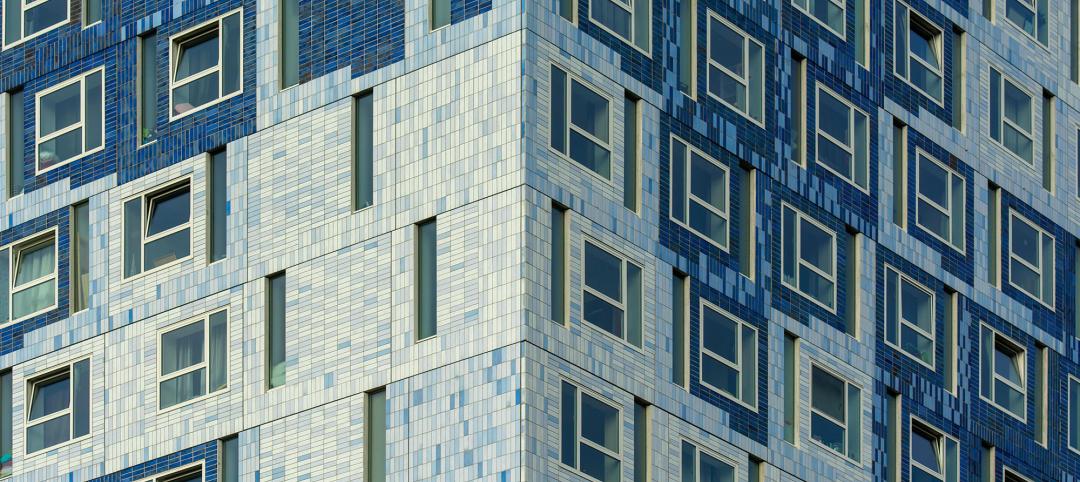A familiar, if time-worn, cliché depicts owner-developers as cost obsessed and hostile to regulations, genuflecting at the altar of value engineering and choosing architects, engineers, and contractors on their track records for delivering projects within budgets so tight they squeak.
Owners, understandably, don’t see themselves that way. A more nuanced picture emerges from BD+C’s inaugural survey of owner-developers about what they expect from their AEC partners. Sure, cost control is a primary consideration for any project. And some owners voiced their frustrations at finding collaborative teams that listen to their cost concerns—and problem-solve accordingly.
Owners who responded to the survey also indicate they lean toward AEC teams that will expose them to new products, innovations, and delivery methods that make a building’s construction and operations more efficient. Energy management, occupant health, and wellness are priorities that owners expect AEC partners to integrate into their designs and engineering.
STEMMING PROBLEMS BEFORE THEY OCCUR
When asked about leading factors that restrict development, owners’ identified availability and cost of capital to finance projects, regulations, and economic uncertainty. Owners don’t have much control over any of these potential barriers, so their influence on a project’s course is more keenly wielded by their choices of AEC firms to work with.
Click To Download BD+C's 2021 Owners Survey Report
This exclusive BD+C survey of 156 building owners and developers explores the changing and most-pressing needs of this highly influential group. From project financing to client service to design, construction, and operations, this research breaks down emerging trends, innovations, and the biggest wants and needs among owners/developers. The survey covers:
• What owners/developers look for in an AEC firm
• Biggest development challenges
• Top health/wellness/environmental strategies on projects
• Single-biggest innovation implemented on projects
• Response to the COVID-19 pandemic.
Download the 16-page PDF report with the complete findings from BD+C's 2021 Owners Survey. Thanks!
As owners weigh their partners’ suitability, their criteria centers on an AEC firm’s capacity to complete a project, its past performance, and how adeptly it interacts with clients. At least one owner said his company tests design and construction management teams on their collaborative skills, which “has led to teams who listen to the owners’ needs and design facilities, solving a multitude of problems such as durability, low maintenance, [and] ease of access.”
But some owners remain unimpressed with certain aspects of AEC firms’ expertise. One owner lamented many firms’ insufficient understanding of contract law. Another owner observed that builders, architects, and designers “need to get much smarter” about incorporating “amazing” technology into buildings, which this owner believes “is going to be the key to the new built environment.”
An owner who works for the U.S. Forest Service noted that his agency struggles to find technologically sophisticated AEC firms with LEED or Green Globes credentials to design and build small projects for rural areas.
THE ENVIRONMENTAL MELTING POT
More developers see the wisdom in making buildings energy efficient and sustainable, but with as few mandates as possible. One owner spoke approvingly of “prescriptive minimum program requirements” to achieve LEED Gold certification on 30 campus buildings, which led to a 30-35% reduction in site energy use and an 18-30% reduction in water use.
The top-ranked environment, health, and wellness strategies that owners polled expect their AEC partners to provide include energy-related modeling, products and systems, and mechanicals optimization.
Thanks to the coronavirus pandemic, energy efficiency and sustainability are checkboxes on a longer list of essentials to create healthier and cost-saving environments. That list runs the gamut from upgrading HVAC systems for better air quality, to carving out wellness spaces within buildings.
An owner who was 18 months into a four-year, $615 million replacement hospital project in Pensacola, Fla., recounted how he “paused to reflect” on the COVID-19 outbreak, and then made “numerous adjustments” to this project’s design that touched the building’s critical care capacity, isolation room availability, and reduced its office space.
“Greater emphasis needs to be placed on the health and wellness of people, which in turn promotes stronger, viable, and more sustainable communities, as well as higher ROIs,” asserted another owner. An owner-developer whose company specializes in theme parks said that ROI derives mostly from savings on water and energy usage. Another owner has moved its projects entirely to heat pumps and 100% electric buildings (except for basements and garages), and maximizes indoor air quality.
Cost is inevitably in the background of these decisions. When injecting these strategies into a project, one owner said he asks his project teams for “reasonableness” that balances goals with budget resources. Another owner spoke of the “lack of professionalism” by design teams that “obsess” over sustainability “with zero regard for capital costs.” A third owner said that achieving net-zero energy and sustainability in buildings, while environmentally responsible, is difficult because their costs impact rents and, therefore, the willingness of financial institutions to lend for such projects.
‘NEW’ IN THE EYE OF THE BEHOLDER
Energy and environmental solutions have piqued owners’ interests over the past few years. Anything technological has also captured owners’ attention. For example, one owner spoke of converting a chilled water system into a low-grade heat system by running water through a surface condenser. Another recently started integrating all building systems into one graphical interface.
Just don’t expect owners to be pioneers. Among the products and construction techniques they cited as “innovations” were tilt-up concrete walls for building offices, 3D design to detect clashes, and UV lighting for infection control.
We can only speculate about why so few owners mentioned prefabrication or modular design and construction as something they’ve tried or are at least watching. One thought is that neither has caught on in nonresidential construction to the extent predicted. More likely, owners might not perceive prefab or modular as something new, as more projects have turned to offsite manufacturing to counter in-field manpower shortages and to control costs.
Owners’ wish lists can be edgier. One owner would like to see a device that measures indoor air quality like a thermometer measures temperature. Another craves hydrogen-powered backup generators (which some companies, including Microsoft, have been using for a while). Several owners put robots on their wish lists. Others are waiting for less-expensive options to meet Passive House standards and for cogeneration, electrical storage, even curtain wall for arctic construction.
Some owners listed alternate delivery methods that smooth projects’ completions and reduce costs. “A lean IPD poly-party agreement that includes critical equipment and materials suppliers as signatories” is one owner’s dream contract. Another owner observed that “teams have demonstrated, when using structured collaborative partnering on all types of projects, that time and money can be saved while maintaining or increasing quality.”
Owner-developers also want better methods to track projects during and after construction. One owner envisions a “Google Street View” for construction sites that allows teams to remotely monitor progress and quality control, perhaps through drones or camera-equipped robots.
Dashboards and command centers are gaining acceptance among owners to manage a building’s programming and obtain real-time data to assess its performance, especially when changes are made in such areas as lighting and airflow. “It’s always a struggle to get the data and display it so others can understand it,” said one owner about dashboards.
DOWNLOAD THE BD+C 2021 OWNERS SURVEY REPORT
Related Stories
AEC Innovators | Apr 15, 2024
3 ways the most innovative companies work differently
Gensler’s pre-pandemic workplace research reinforced that great workplace design drives creativity and innovation. Using six performance indicators, we're able to view workers’ perceptions of the quality of innovation, creativity, and leadership in an employee’s organization.
MFPRO+ News | Apr 12, 2024
Greystar becomes top apartment owner, manager, and developer in 2024
One firm set records for this year’s National Multifamily Housing Council Top 50 roundup of multifamily firms. Greystar now sits at number one in the NMHC’s lists for top apartment owner, manager, and developer in 2024.
K-12 Schools | Apr 10, 2024
Surprise, surprise: Students excel in modernized K-12 school buildings
Too many of the nation’s school districts are having to make it work with less-than-ideal educational facilities. But at what cost to student performance and staff satisfaction?
Multifamily Housing | Apr 9, 2024
March reports record gains in multifamily rent growth in 20 months
Asking rents for multifamily units increased $8 during the month to $1,721; year-over-year growth grew 30 basis points to 0.9 percent—a normal seasonal growth pattern according to Yardi Matrix.
Retail Centers | Apr 4, 2024
Retail design trends: Consumers are looking for wellness in where they shop
Consumers are making lifestyle choices with wellness in mind, which ignites in them a feeling of purpose and a sense of motivation. That’s the conclusion that the architecture and design firm MG2 draws from a survey of 1,182 U.S. adult consumers the firm conducted last December about retail design and what consumers want in healthier shopping experiences.
Industry Research | Apr 4, 2024
Expenses per multifamily unit reach $8,950 nationally
Overall expenses per multifamily unit rose to $8,950, a 7.1% increase year-over-year (YOY) as of January 2024, according to an examination of more than 20,000 properties analyzed by Yardi Matrix.
Student Housing | Mar 27, 2024
March student housing preleasing in line with last year
Preleasing is still increasing at a historically fast pace, surpassing 61% in February 2024 and marking a 4.5% increase year-over-year.
K-12 Schools | Mar 18, 2024
New study shows connections between K-12 school modernizations, improved test scores, graduation rates
Conducted by Drexel University in conjunction with Perkins Eastman, the research study reveals K-12 school modernizations significantly impact key educational indicators, including test scores, graduation rates, and enrollment over time.
MFPRO+ News | Mar 16, 2024
Multifamily rents stable heading into spring 2024
National asking multifamily rents posted their first increase in over seven months in February. The average U.S. asking rent rose $1 to $1,713 in February 2024, up 0.6% year-over-year.
MFPRO+ News | Mar 12, 2024
Multifamily housing starts and permitting activity drop 10% year-over-year
The past year saw over 1.4 million new homes added to the national housing inventory. Despite the 4% growth in units, both the number of new homes under construction and the number of permits dropped year-over-year.


















